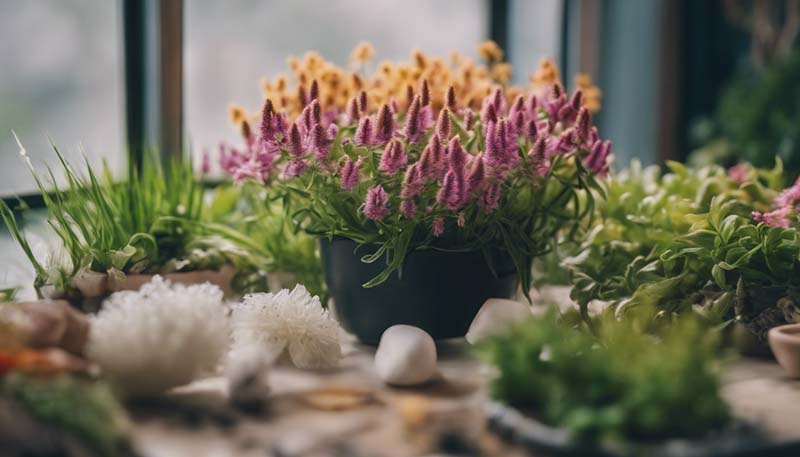Indoor Gardening and Health: How to Reduce Allergies
As the world becomes more urbanized, people are spending more time indoors, often in environments with limited access to nature. This shift has led to an increased interest in indoor gardening as a way to bring a bit of the outdoors in, improve air quality, and enhance overall well-being. However, for those who suffer from allergies, indoor plants can sometimes exacerbate symptoms. This article explores how indoor gardening can actually help reduce allergies and create a healthier living space.
The Role of Indoor Plants in Allergy Reduction
Contrary to popular belief, not all indoor plants contribute to allergy symptoms. In fact, many plants can help reduce allergens and purify the air, leading to a healthier environment for those with sensitivities.
Air Purification
Some indoor plants are natural air purifiers, capable of removing common allergens such as dust, mold spores, and pet dander from the air. The process of photosynthesis in plants not only produces oxygen but also helps filter out pollutants.
Advertisement
Humidity Regulation
Many allergens, such as dust mites, thrive in certain humidity levels. By strategically placing plants that regulate humidity, you can create an environment less conducive to allergen growth.
Oxygen Enrichment
Increasing oxygen levels in your home can also help alleviate allergy symptoms. Oxygen-rich air can improve respiratory function and reduce the irritation caused by allergens.
Selecting the Right Indoor Plants for Allergy Sufferers
When choosing indoor plants to reduce allergies, it's important to select species known for their air-purifying qualities and allergen-reducing attributes.
Air-Purifying Plants
- Spider Plant (Chlorophytum comosum) - Known for its ability to remove pollutants like formaldehyde and benzene from the air.
- Peace Lily (Spathiphyllum) - Effective at cleaning the air of toxins, including mold spores and volatile organic compounds (VOCs).
- Boston Fern (Nephrolepis exaltata) - Particularly good at removing toxins from the air and increasing humidity levels.
Low Allergen Plants
- Aloe Vera (Aloe barbadensis miller) - Produces very little pollen and has air-purifying properties.
- Snake Plant (Sansevieria trifasciata) - Known for its ability to absorb toxins like formaldehyde and for its low allergen levels.
- English Ivy (Hedera helix) - An efficient air purifier that also helps to trap allergens on its leaves.
Creating an Allergy-Friendly Indoor Gardening Environment
Beyond selecting the right plants, there are several other steps you can take to create an allergy-friendly indoor garden:
Maintain Cleanliness
Regularly clean your home, including floors, surfaces, and air vents, to reduce allergen buildup.
Water Plants Properly
Overwatering can lead to mold growth. Ensure proper drainage and avoid letting plants sit in standing water.
Provide Adequate Ventilation
Good airflow helps to prevent the growth of mold and mildew, which can trigger allergies.
Monitor Humidity Levels
Use a hygrometer to monitor humidity levels and adjust as necessary to maintain a healthy balance.
Conclusion
Indoor gardening can be a beneficial and enjoyable activity for everyone, including those with allergies. By selecting the right plants and creating a well-maintained environment, you can reduce allergens, improve air quality, and enjoy the many health benefits that indoor plants have to offer.

Remember: Always consult with a healthcare professional or an allergist before introducing new plants into your home if you have severe allergies.
Comment